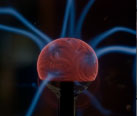
-
 World-Leading, Innovative: A Novel Non-Invasive Risk Assessment Device for Rapid Screening of StrokeOctober 28, 2020Sponsored by the Ministry of Science and Technology... Read More
World-Leading, Innovative: A Novel Non-Invasive Risk Assessment Device for Rapid Screening of StrokeOctober 28, 2020Sponsored by the Ministry of Science and Technology... Read More -
 MOST GASE Held the 2020 MOST Science and Technology International Cooperation Research Symposium to Strengthen Post Pandemic International R&D ConnectionOctober 20, 2020On October 20 and 21, the Ministry of Science and... Read More
MOST GASE Held the 2020 MOST Science and Technology International Cooperation Research Symposium to Strengthen Post Pandemic International R&D ConnectionOctober 20, 2020On October 20 and 21, the Ministry of Science and... Read More -
 【Share- Steering Members News】A quantum leap in our understanding of the quantum world, after half a centuryOctober 19, 2020As a physical theory for predicting observations at the (subatomic) microscopic level... Read More
【Share- Steering Members News】A quantum leap in our understanding of the quantum world, after half a centuryOctober 19, 2020As a physical theory for predicting observations at the (subatomic) microscopic level... Read More -
 “GASE X GenZ: Unleash Your Generation InfluenZ”October 19, 2020Last Friday (October 15th ), GASE held the first youth workshop “GASE X GenZ: Unleash... Read More
“GASE X GenZ: Unleash Your Generation InfluenZ”October 19, 2020Last Friday (October 15th ), GASE held the first youth workshop “GASE X GenZ: Unleash... Read More -
 MOST GASE Held Matchmaking Conference 2020 to Strengthen Post Pandemic Taiwan-Japan Research Cooperation on Aging R&D ConnectionOctober 17, 2020Have you ever imagined gardening through 3D-VR... Read More
MOST GASE Held Matchmaking Conference 2020 to Strengthen Post Pandemic Taiwan-Japan Research Cooperation on Aging R&D ConnectionOctober 17, 2020Have you ever imagined gardening through 3D-VR... Read More -
 【Share- Steering Members News】'National Chung-Hsing University’s research team develop novel two-dimensional neural synapses to seek Artificial Neuromorphic AlternativesOctober 14, 2020A research team led by Prof. Yen-Fu Lin, Associate Professor... Read More
【Share- Steering Members News】'National Chung-Hsing University’s research team develop novel two-dimensional neural synapses to seek Artificial Neuromorphic AlternativesOctober 14, 2020A research team led by Prof. Yen-Fu Lin, Associate Professor... Read More -
 Uncovering the pathogenesis of premature aging- Taiwan research team found a link between progeria and cilia-deficiency, published as a cover story on EMBO ReportsOctober 12, 2020Selected as the cover story of EMBO Reports on the... Read More
Uncovering the pathogenesis of premature aging- Taiwan research team found a link between progeria and cilia-deficiency, published as a cover story on EMBO ReportsOctober 12, 2020Selected as the cover story of EMBO Reports on the... Read More -
 Psychological stress triggers physical pain- Probing pathophysiology of fibromyalgia with translational researchOctober 05, 2020What is fibromyalgia? What is its relationship with stress?... Read More
Psychological stress triggers physical pain- Probing pathophysiology of fibromyalgia with translational researchOctober 05, 2020What is fibromyalgia? What is its relationship with stress?... Read More
Radar and Remote Sensing seem far from our lives but are actually close to our everyday lives. From weather forecast to maps and automotive navigation systems, it all depends on radar and remoting sensing technology to provide information. Remote sensing mainly uses artificial satellites, airplanes, or Unmanned Aerial Vehicles (UAVs) to conduct observations and transmit the data back to the ground through Electromagnetic Radiation (EMR). After receiving data from EMR, the satellite ground receives stations will start analyzing the data and use the information on resource investigation, environmental monitoring, weather forecast, and disaster prevention.... Read More
Taiwan is a pioneer in remote sensing research and applications in Asia. Remote Sensing (RS) is an effective and efficient way of collecting data and information, which utilizes assorted platforms and sensors to detect, explore and monitor various characteristics and phenomena. Combined with Geographic Information Sciences (GIS) and Global Navigation Satellite Systems (GNSS), the “3S” technologies are the fundamentals of Geoinformatics and an indispensable element of information infrastructure in the modern society. The National Space Organization (NSPO) of the National Applied Research Laboratories (NARLabs) will launch 10 RS satellites, including high resolution, very high resolution, and SAR (Synthetic Aperture Radar) satellites in the next decade to further strengthen the RS capacity in Taiwan.
This month’s issue highlights a few examples of advanced remote sensing research and applications recently carried out by researchers in Taiwan. These cases demonstrate the integration and use of diversified remote sensing technologies and data to achieve sophisticated applications in different domains. The platforms involved include satellites, airborne planes and unmanned aerial vehicles (UAVs), and the data were collected using multi-spectral, LiDAR (Light Detection And Ranging) optical sensors, and SAR (Synthetic Aperture Radar) instruments. These data were processed and analyzed with state-of-the-art algorithms and methods, including spatial analysis and machine learning techniques developed by the researchers. The outcomes of this research support assorted advanced applications in different domains integrating application and international cooperation in multiple fields, such as hazard investigation and mitigation, land subsidence monitoring, bathymetry mapping, water quality assessment, riverbed grain size analysis, and precision farming support (agricultural disaster assessment). The examples presented above provide a solid demonstration of the achievements in remote sensing research and applications in Taiwan.

Editor in Chief
Ying-Shao Hsu (National Taiwan Normal University)

Guest Editors
Hsieh-Lung Hsu (National Central University)














